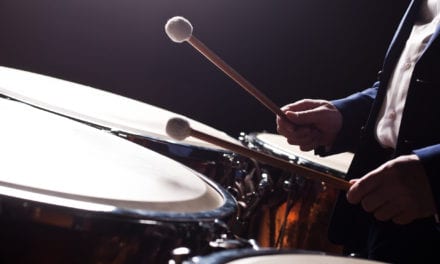By Douglas Droste
As string players, we are fortunate to have the ability to create such a beautiful sound. The way the “rubber meets the road” (or hair meets the string) and resonates through the instrument is like no other.
Oftentimes, young string players cheat themselves (and their audiences) from creating a full sound due to ineffective bow control or distribution. We have the potential to fully sustain a sound no matter which way the bow is going. Assuming the bow hold is correct (properly curved), the relationship between the three factors of creating sound on a string instrument (bow speed, bow placement, and bow weight) must be proportionate.
This “Quick Clinic” will focus on distributing weight throughout the bow stroke for long, sustained, and rich sounds, ideal for pieces such as Sibelius’ Andante Festivo and Britten’s “Sentimental Sarabande” from the Simple Symphony. Young players tend to lose sound on down bows, or worse, if they are “tippers” (where they hang out in the upper half for most everything). During my clinics, I like to remind students that for this bow stroke the amount of weight must increase as the bow moves away from the hand. I equate this as turning a volume dial or knob (back when they weren’t just buttons on a screen!). While technically it’s backwards, when the bow goes down to the tip, players must turn their “volume dial” to the left and apply more weight by turning into the stick, primarily with their “volume button” (index finger). The image of turning the dial will hopefully keep them from avoiding unnecessary tension by just squeezing tighter.
Here is an easy exercise that can be used during your daily warm-up and fundamental routine: have students play an open D on a down bow for 4 counts and add a crescendo on the last two beats. Repeat with 6 counts, 8 counts, etc. This will get students used to the idea of adding more weight as they play in the upper half.
Students producing a warm and sonorous sound on their string instruments will not only create a better sound for your orchestra, but will contribute to their overall joy of playing and sounding good!


